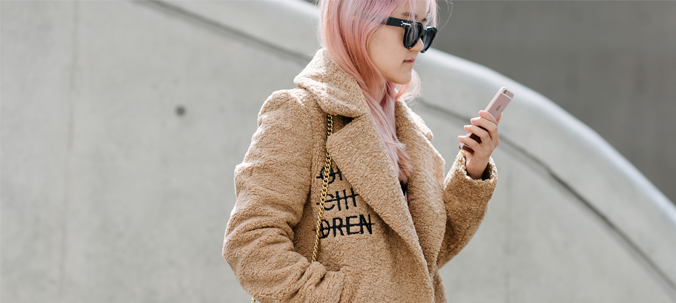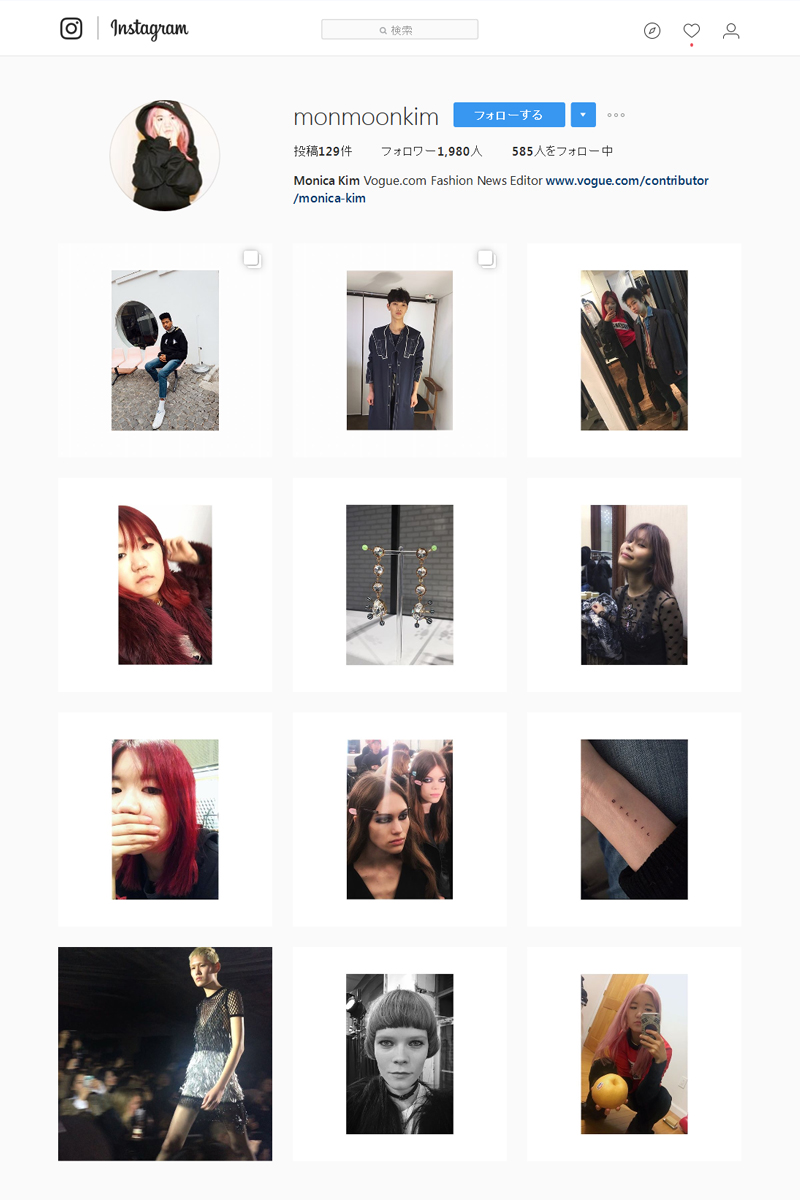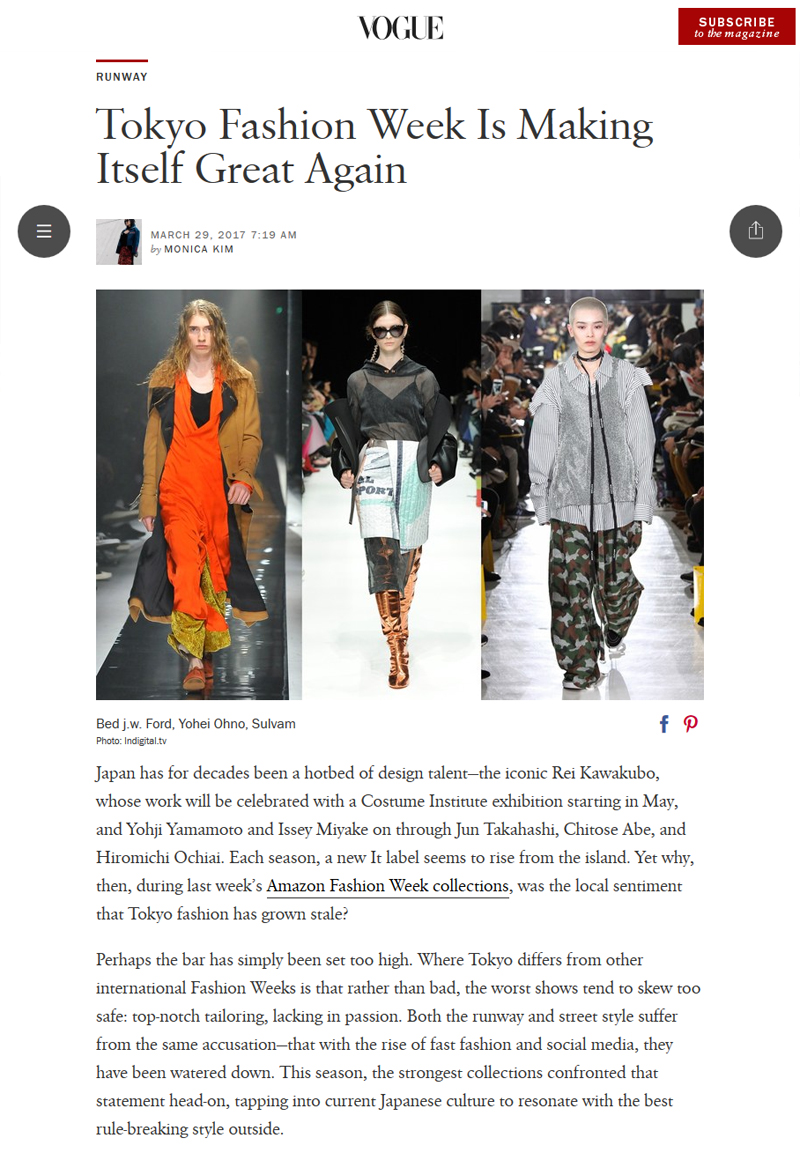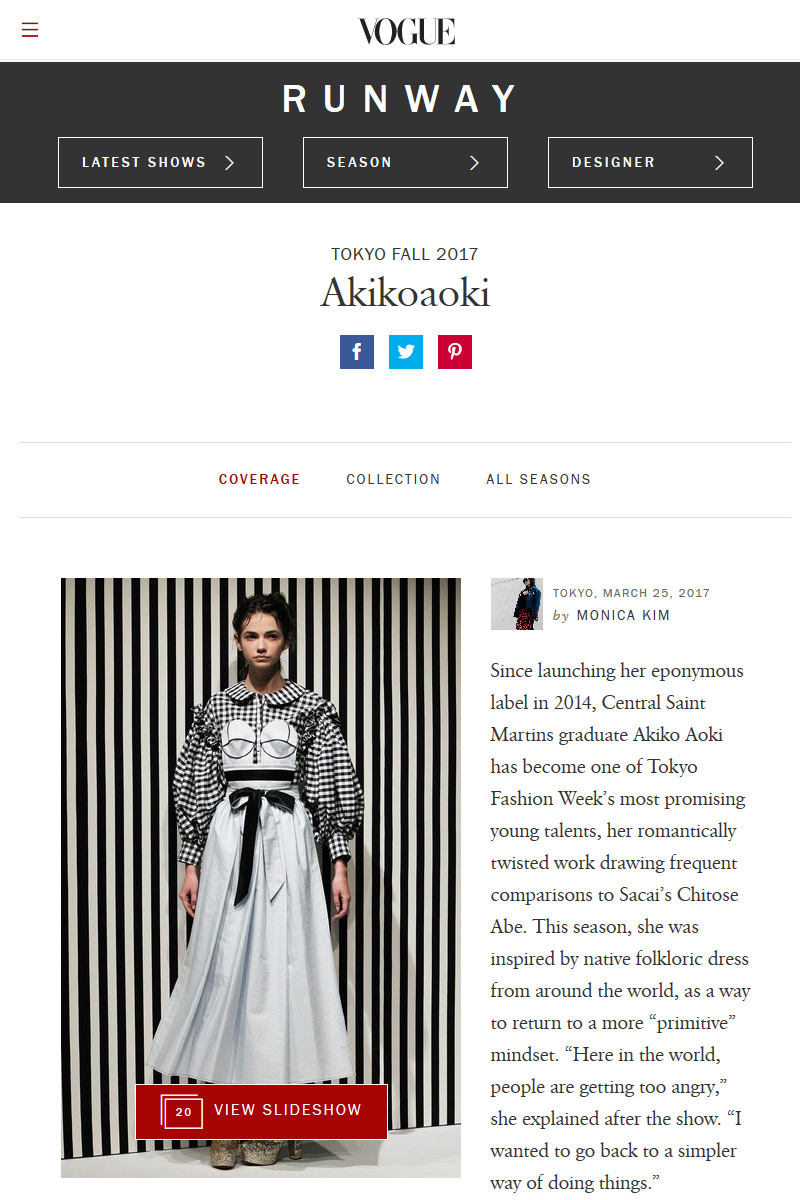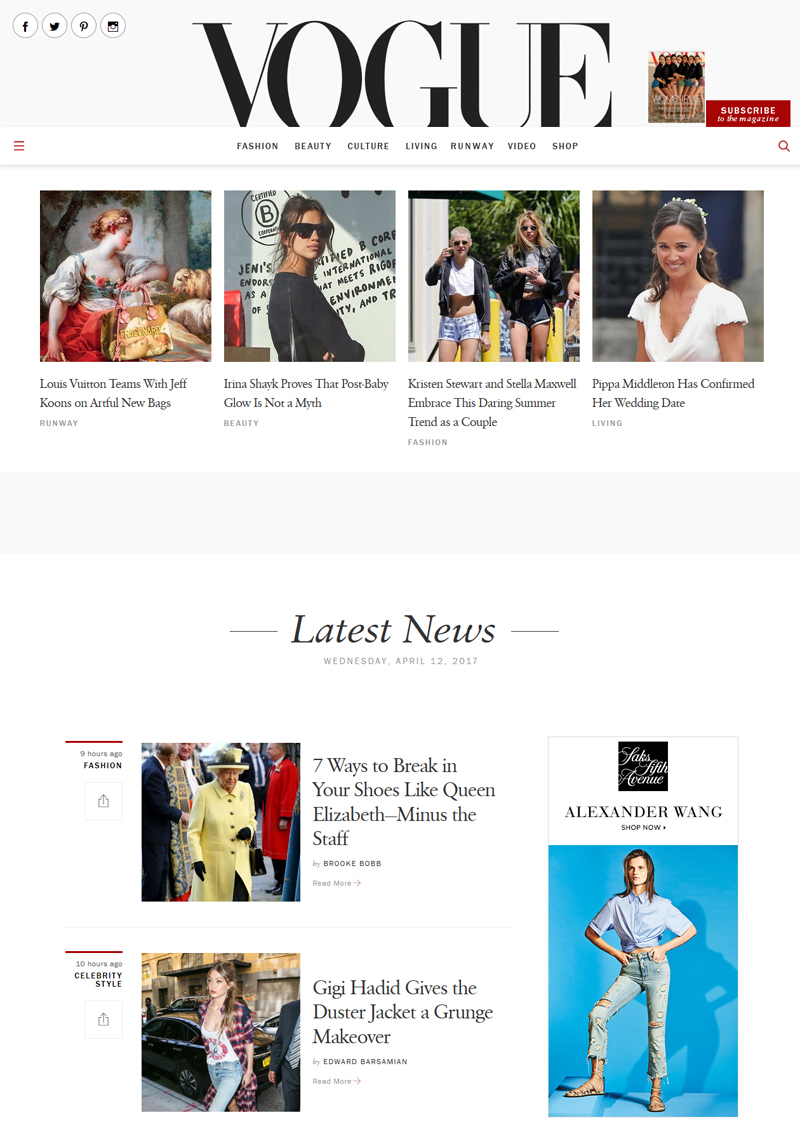Monica Kim
AmazonFWT 2017 A/W, Overseas Guest Interview vol.2
As the Fashion News Editor at “Vogue.com”, Ms. Kim has previously written articles for “Wired”, “New York Magazine” and “The Atlantic”.
[ Website ] http://www.vogue.com/?us_site=y
[ Instagram ] https://www.instagram.com/monmoon/
[ Twitter ] https://twitter.com/monicamkim
During the period of the Amazon Fashion Week TOKYO 2017 A/W, Monica Kim, Fashion News Editor at Vogue.com, visited Japan to see runway shows and visit showrooms of multiple brands. We’ve interviewed Ms. Kim, who is currently also paying close attention to Asian fashion scenes including Tokyo and Seoul. We asked on various topics, including her impression of Fashion Week Tokyo, Japanese fashion brands and current status and future prospective of the fashion industry across Asia.
You have come to Japan many times before. What is your overall impression of Tokyo fashion?
Some Americans still consider Harajuku street style from the late 90s or early 2000s to be the reigning example of Tokyo fashion, but in recent years I think a more basic, minimal style has become mainstream in Tokyo. Overall, street style around the world is growing more and more similar, probably due to the influence of social media, and that may have affected Tokyo’s fashion scene as well. In general, expectations for Japanese fashion have always been quite high; there are some people who think that Tokyo fashion has become a little boring compared to the past, but I think there is still a lot of creativity in Tokyo that feels very unique.
What are the characteristics of Japanese fashion brands?
Japanese brands generally are known for being extremely high quality, from the fabrics to the tailoring. I am personally a big fan of COMME des GARÇONS, and of course, a lot of Japanese brands have presumably been influenced by that avant-garde mood. But lately, I think more and more Japanese brands are specializing in clean, minimal design with some unusual details. As for the average American consumer, they’d probably think of UNIQLO when it comes to Japanese fashion. While fast fashion is usually considered to be lower quality, UNIQLO has exceptionally inexpensive but well-made clothes. From this point of view, Japan still has that reputation for quality.
Can you share with us your impression on Fashion Week Tokyo overall?
I was impressed by how well Fashion Week is organized in Tokyo. New York, Milan, and Paris Fashion Weeks can sometimes get out-of-control (laugh), but shows start on time here in Tokyo and people are very kind. Fashion Week Tokyo has such a nice atmosphere.
Are there any brands that you found particularly impressive, during your visit this time?
I was introduced to a couple of new brands. To name some, I was really impressed by sulvam” and BED j.w. FORD; they both had such well-done collections. I met with both designers, and it was so nice to hear about the level of thought that goes into their fabric selection, tailoring and the message they want to convey. I also love AMBUSH. The way they have combined jewelry and clothes is so interesting. The brand has such a unique point of view and strong brand identity. I look forward to seeing what they do next. 99%IS- is another brand that I love. I met the designer last year and he also had such a strong point of view and incredible passion for making clothes. I also liked YOHEI OHNO very much. I visited his studio and thought he was making such smart, wearable clothes—it was one of my favorites. I really enjoyed AKIKOAOKI’s show. She has really intriguing ideas, and plays with colors and shapes in a way that felt fresh to me. I was also impressed by MOTO GUO from Malaysia. I spoke to the designer after the show and he said something very impressive; whether it’s positive or negative, he thinks it is important to create clothes that evoke emotion, instead of doing something safe, which I totally agree with.
You have also seen the Fashion Week in Seoul with your interest in Asian fashion scenes. How do you see the Asian fashion outside of Japan; fashion in Korea, China, Thailand or Malaysia?
With Asian economies growing rapidly, the fashion industries in those countries are getting more attention from all around the world. In addition, thanks to social media, we can now discover new brands from Asia more easily than ever before. The industry is constantly looking for new talent, and we should be paying more attention to Asia because there are so many unrecognized, talented designers here. As an editor for VOGUE, I have been paying close attention to Asian designers over the last two years, including designers from Tokyo and Seoul. Many of our readers want to know what is happening not just in New York, Paris, or Milan but also what’s happening across the globe. I would like to cover stories on new designers and proactively talk about their work.
What differentiates VOGUE from other fashion magazines? Can you talk us about your magazine’s identity and what VOGUE is currently focusing on?
VOGUE is very fortunate to have the platform that it does. Personally, I always love focusing on the people behind the fashion and telling those stories. I hope to provide not only basic information, but a deeper look at the culture behind fashion and why it matters to our daily lives.
Because of the remote location from Europe and the United States, it is not very easy for designers from Asian countries including Japan to be discovered by foreign people. What do you think Asian brands need to do in order to get more attention from global markets?
I definitely think social media is important. Using social media and making the most of it can be challenging to some people but it can be a great platform to present your work. One of the great things about social media apps like Instagram is that people can stumble upon you while using the app. Also, there are many people who do research on social media to find new designers from all around the world. In fact, I personally did quite a lot of research on Japanese brands through social media before I came to Tokyo this week and I found many that I wanted to check out in person.
We see more and more designers from Asia going overseas to have their base in Europe and in the United States. What do you expect about the future of Asian fashion?
There are many Asian designers going to good fashion schools in Paris, New York, and other international cities these days and there will be even more in the future. It’s wonderful to see great talent from Tokyo, Seoul or Shanghai now going abroad, establishing their base in Paris, London, New York, etc. and developing their reputations there. Those designers are proving that the level of Asian fashion is as high as that found anywhere else. I do hope that those designers will eventually go back to their countries to help grow the fashion industry back home and support the next generation of designers.
INTERVIEW by Yuki Harada
TRANSLATION by Hiroyuki Takagi


